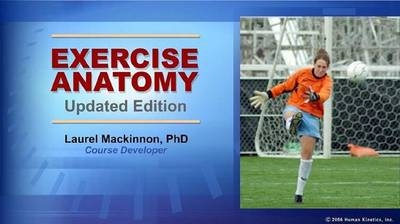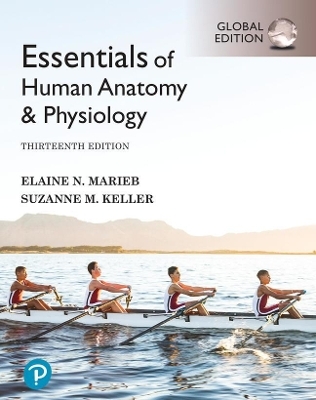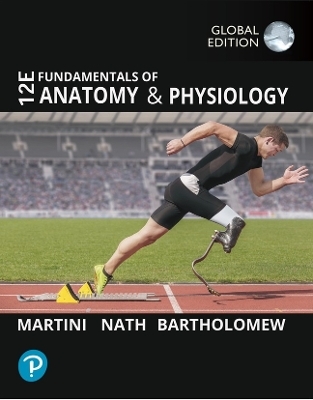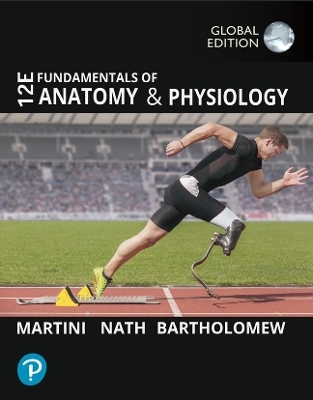
Exercise Anatomy Course-Updated Edition-NT
2005
Human Kinetics (Hersteller)
978-0-7360-6437-8 (ISBN)
Human Kinetics (Hersteller)
978-0-7360-6437-8 (ISBN)
- Titel ist leider vergriffen;
keine Neuauflage - Artikel merken
In this highly interactive online course you will learn to better understand exercise anatomy and be able to create and modify exercise programs designed to enhance your client's physical fitness or sport performance, or help a client rehabilitate after an injury or surgery. This course combines three dynamic learning components: an online study guide, the best-selling book, "Strength Training Anatomy, Second Edition, " by Frederic Delavier, and Anatomy.tv software links. Exercise anatomy helps us to understand how the body's structures interact to cause movement and how these respond and adapt to exercise training. The course focuses on the three main structural and functional systems of the body essential to movement: -the skeletal system of the bones, joints, and connective tissue that support the body and provide connections between different body segments-the muscular system composed of skeletal muscles that produce force, and thus movement-the nervous system that processes information and initiates and controls muscle movements "Strength Training Anatomy, Second Edition, " by Frederic Delavier, is used to help youapply exercise anatomy to real life strength training exercises. The direct links between the online course material and Anatomy.tv provide access to the best anatomical 3-D images for each topic from several Primal products, such as the "Interactive Knee," "Interactive Shoulder," "Interactive Spine," and their newest web-based product, "Interactive Functional Anatomy."The learner can manipulate the images in the links to view structures in 3-D motion or to add layer upon layer until structures are constructed from bone to skin. In combination, these resources bring exercise anatomy to life, and will help you to increase your understanding of the body's three main structural and functional systems and how these support physical activity.You'll be working as a personal trainer at a university fitness center throughout this online course. Gurig Kumar, the director of the fitness center, will introduce you to clients who will help you apply your exercise anatomy knowledge. Gurig will also help you evaluate your new knowledge and skills. Session 1: Your first session with Gurig will be a review of the basic terms and concepts of exercise anatomy. By the end of this session, you should correctly use the three planes of reference and anatomical position to describe the body position your client should assume during fitness testing and exercise. You'll learn to identify and distinguish between the different spatial positions of body limbs. Gurig introduces you to a group of virtual clients. These clients will help you to understand the concepts and principles of exercise anatomy.Session 2: Session two will focus on the function and structure of bone and how this supports human movement. Gurig will describe the basic function and structure of bone. You'll learn to identify the body's basic structural types of bones based on shape. You'll identify the different bones of the body and their spatial relationship using the concepts of the appendicular and axial skeletons. This session ends with a discussion of how bones adapt to exercise training.Session 3: Session three focuses on the function, structure, and movement of joints. Gurig helps you to learn to identify the different types of synovial joints. During fitness testing and exercise prescription design, you'll also need to understand joint flexibility, stability, and laxity. You'll learn to identify the different joints of the axial and appendicular skeletons.Session 4: This session shows you the function and structure of the muscular system and how this supports human movement. Gurig will describe the basic function and structure of the muscular system and muscle cell. You'll learn to identify and give examples of the different types of muscle actions. This session concludes with a discussion of the structural adaptations of skeletal muscle to exercise training.Session 5: During this session, you will build on your knowledge of the muscular system by focusing on muscle actions and body movement. You'll examine simple movements and learn to identify the different roles of muscle groups in relation to one another. You'll also identify muscle groups by describing the location and action performed. You'll be able to identify the specific muscle groups used in basic movements and generate a simple exercise training program to target those muscle groups.Session 6: This session provides you with an opportunity to examine the function and structure of the nervous system and how this supports human movement. You'll apply your knowledge about the different types of skeletal muscle and the size principle of motor unit recruitment as you work with the virtual clients. Gurig will help you learn to identify the different components of the kinaesthetic system and how these help in control of movement. This session concludes with a discussion of neural adaptations to exercise training.Finally, an online test will evaluate your understanding of the material covered by the interactive course and supplemental material. Visit www.hkeducationcenter.com to begin! For the college version, visit http: //academic.hkeducationcenter.com.NOTE: The text is required for successful completion of the course. If you do not already own the text, you would order the course with the text."System requirements: - Internet connection with a 56K modem or better- Netscape Navigator 4.78, 4.79, or 6.0 (4.79, 6.0 for Mac) or Internet Explorer 5.0, 5.5, or 6.0 (5.1 for Mac)- Computer monitor preferences set for 640 x 480 resolution or larger with a minimum of 256 colors- Macromedia Shockwave Player plug-in installed- Adobe Acrobat Reader installed
| Erscheint lt. Verlag | 5.12.2005 |
|---|---|
| Verlagsort | Champaign, IL |
| Sprache | englisch |
| Themenwelt | Studium ► 1. Studienabschnitt (Vorklinik) ► Anatomie / Neuroanatomie |
| Naturwissenschaften ► Biologie ► Humanbiologie | |
| ISBN-10 | 0-7360-6437-0 / 0736064370 |
| ISBN-13 | 978-0-7360-6437-8 / 9780736064378 |
| Zustand | Neuware |
| Haben Sie eine Frage zum Produkt? |
Mehr entdecken
aus dem Bereich
aus dem Bereich
Freischaltcode (2022)
Pearson Education Limited (Hersteller)
59,95 €
Online Resource (2023)
Pearson Education Limited (Hersteller)
62,40 €
Online Resource (2023)
Pearson Education Limited (Hersteller)
34,65 €


